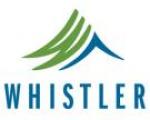California and Texas are no strangers to challenges with their electrical grid infrastructure amid the climate-related events impacting both states as of lately. The California Independent System Operator (CAISO) and the Electric Reliability Council of Texas (ERCOT) markets along with their respective distribution system operators represent a living laboratory for distributed energy resources (DER) and the role these assets play in balancing supply and demand across the grid. With climate change, extreme weather events will only become more frequent and intense, underscoring the need for grid modernization solutions to withstand these crises. The need for integrated, scalable systems capable of coordinating varied distributed energy resources online has never been greater.
Part of the solution to the issues facing these states is the increased use of distributed resources, including microgrids, community energy storage and other distributed energy solutions that can provide partial or full support of geographically dispersed customers during major events.
With the national digitization and decarbonization movement gaining momentum, DER assets are infinitely more valuable when integrated into consumer sites, markets and the grid in a way that takes evolving demand into account to identify solutions that bolster reliability for more customers in the service area, not just the owners of the assets. This calls for a rethinking of systems operations and a broader introduction of scalable, automated management solutions that keep pace with the growth of DER networks.
The case for DERMS
Utilities and grid operators must take advantage of this transformational time to adopt automated, grid-edge orchestration platforms, including distributed energy resource management systems (DERMS), alongside new DER technologies and management processes.
With the increase in DER, and in particular energy storage flexibility, with solar PV in the coming years, there is a significant increase in the amount of flexibility available to utilities through different types of programs in California, for example. Some programs may address one type of DER, for example, EV charging, while others may “bundle” multiple behind-the-meter capabilities together, like solar, home battery and EV, or water heater and HVAC together. By providing broader grid visibility and situational awareness, DERMS can support utilities in streamlining further penetration of renewable energy resources and in implementing innovative customer engagement efforts and incentives, such as utility-sponsored solar + storage programs, EV to grid initiatives and peer-to-peer trading.
DERMS effectiveness
The most intelligent, automated DERMS act as a “system-of-systems,” integrating with vendors of DER, VPPs and microgrid management systems in addition to legacy systems operators already use, such as SCADA, DMS and ADMS. DERMS, if designed as part of a system-of- systems orchestration platform, allows all distribution systems to act as a single OT and IT integrated platform, thus enabling automated end-to-end OT and IT processes. A DERMS will not only analyze and adjust based on grid behaviors, but its algorithms also efficiently scale and manage new DER classes as they emerge, thus reducing strains on the grid and incidences of brownouts and their impact on consumers when they do occur.
Once in place, the most effective DERMS platforms provide grid operators with topology awareness, a crucial feature to help manage supply and demand in a system that includes varied, distributed resources. In a market like California, for instance, where there might be a high concentration of residential solar + storage systems available for dispatch, a DERMS will offer operators insights into that segment of assets, generation, and customer usage patterns. By tracking the behaviors of a variable asset like solar, the system can provide insights into how and where the utility may be able to tap into stored customer energy to offset peak periods or even keep customers online during an outage.
Demand response programs are already in use across many states, aimed to shift customer behaviors and use of distributed assets in ways that support the grid at large and maintain favorable rates. These programs will only continue to emerge and mature as new projects and technologies come online and show potential as viable assets for grid services. Take EVs, for instance. Charging for every EV represents a major load for a transformer. Current distribution systems are not designed to handle uptake of these types of assets at the volume we can expect, with more customers investing in EVs. The solution? A combination of rate-based programs, which encourage charging behaviors at times when they will be least disruptive to the grid as well as integrating EV charging into existing demand response programs. Both can be introduced and managed over the long term, with the help of a DERMS.
The same goes for a residential virtual power plant community, in which a collective of solar + storage systems, owned by customers, can be monitored, and dispatched by the utility in times of need. Across the board, as new technologies cause changes in the amount of flexible capacity, DERMS will become an increasingly valuable solution for management, providing grid operators with enhanced options to visualize activity, manage loads and prepare for adverse events.
Rather than investing in upgrading and replacing existing assets or doubling down on costly, wired solutions such as transformers and cables to manage these new challenges, there is an opportunity for all states, including California and Texas, to optimize management of DERs against the existing loads. This would more efficiently provide energy to customers in times of high demand and consume energy during times of high supply, which could alleviate stress on the network, reduce capital investments and operational costs, improve reliability and lower the cost of delivering energy to its customers.
Where DERMS fit into the big picture
A DERMS is the missing link in the broader energy transition. Utilities must view them as an investment in their technologies, infrastructure, and customer experience. Both California and Texas need the support of their respective state governments and regulators to continue to promote and support the rate cases that will enable utilities in both states to prepare for distributed energy resources. Ultimately, that support will help drive a more reliable and resilient energy experience for the customers in both states.
 Andy Bennett CEO of mPrest, Inc., a developer of world-leading distributed asset orchestration and optimization software.
Andy Bennett CEO of mPrest, Inc., a developer of world-leading distributed asset orchestration and optimization software.
















